Building on the success of the existing Guide brake series, SRAM today announces a new entry-level option called the Guide T, which will sell for £104 per end.
Whereas SRAM’s Level brake range is targeted towards XC riders, and the Code range is designed for downhillers, the Guide brakes are there to straddle the gap in between. Like its more expensive siblings, the Guide T brake will utilise the same S4 quad-piston callipers that feature a combination of 14mm and 16mm diameter phenolic pistons to balance power and modulation. They even get the same stainless steel heat shield that’s designed to suck heat away from the DOT brake fluid.
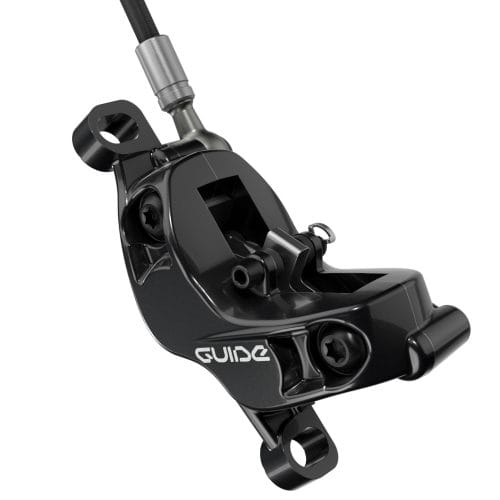
Compared to the Guide R – the previous entry into the Guide range – the Guide T misses out on a tool free reach adjuster, instead electing for a 2.5mm hex bolt that’s tucked in behind the lever pivot. The lever bodies are still ambidextrous, but the Guide T uses a split clamp for mounting to the handlebar, rather than the clamshell-style mount found on the pricier models. This split clamp is the same type you’ll find on the similarly-priced Level T disc brakes, and it requires a separate MatchMaker adapter for you to integrate a SRAM trigger shifter with the brake lever.
Aside from that though, it’s all very similar to the the current Guide R.
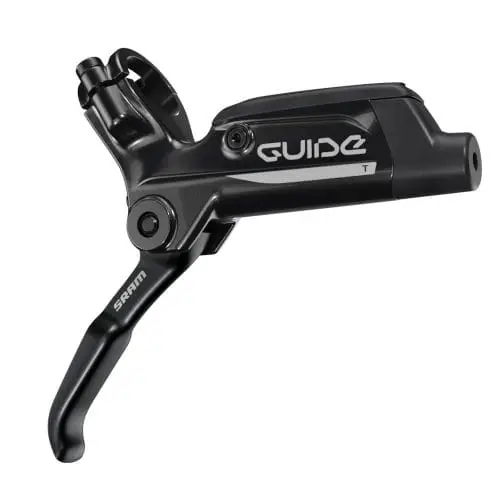
SRAM says of it: “Guide T brings the consistent performance that you have come to expect from our lightweight Guide four-piston caliper. Pair this with MatchMaker for a clean looking bar set-up, plus the ease of use with our Bleeding EdgeTM drip-free bleed port and you have a smart budget minded brake that keeps you in control”
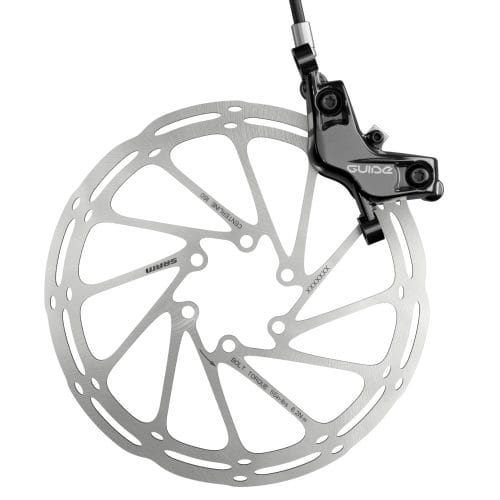
SRAM Guide T Brake Features
- New quad-piston calliper brakes for Trail and Enduro
- Ambidextrous split clamp alloy lever bodies
- MatchMaker compatible
- Stamped alloy lever blade
- Adjustments: Tool-free lever reach & pad contact
- Piston diameter: 14/16mm
- Stock pad compound: Steel-backed organic (sintered metallic available separately)
- Stainless steel heat shields
- Fluid: DOT 5.1
- Claimed weight: 280g per end
- RRP: £104 per end (without rotors and adapters)
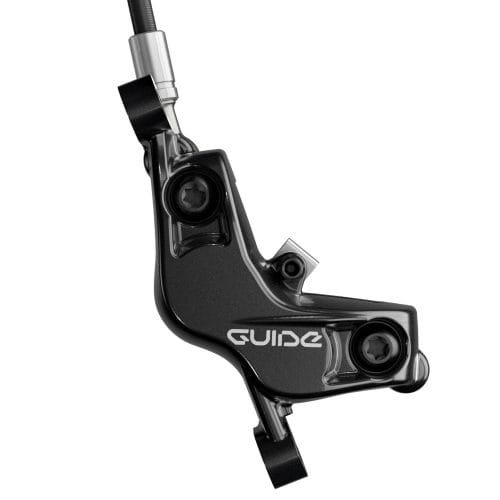
For more information on the new Guide T, head to SRAM.com, or get in touch with ZyroFisher to find your nearest UK stockist.
Comments (5)
Leave Reply
Post Comment
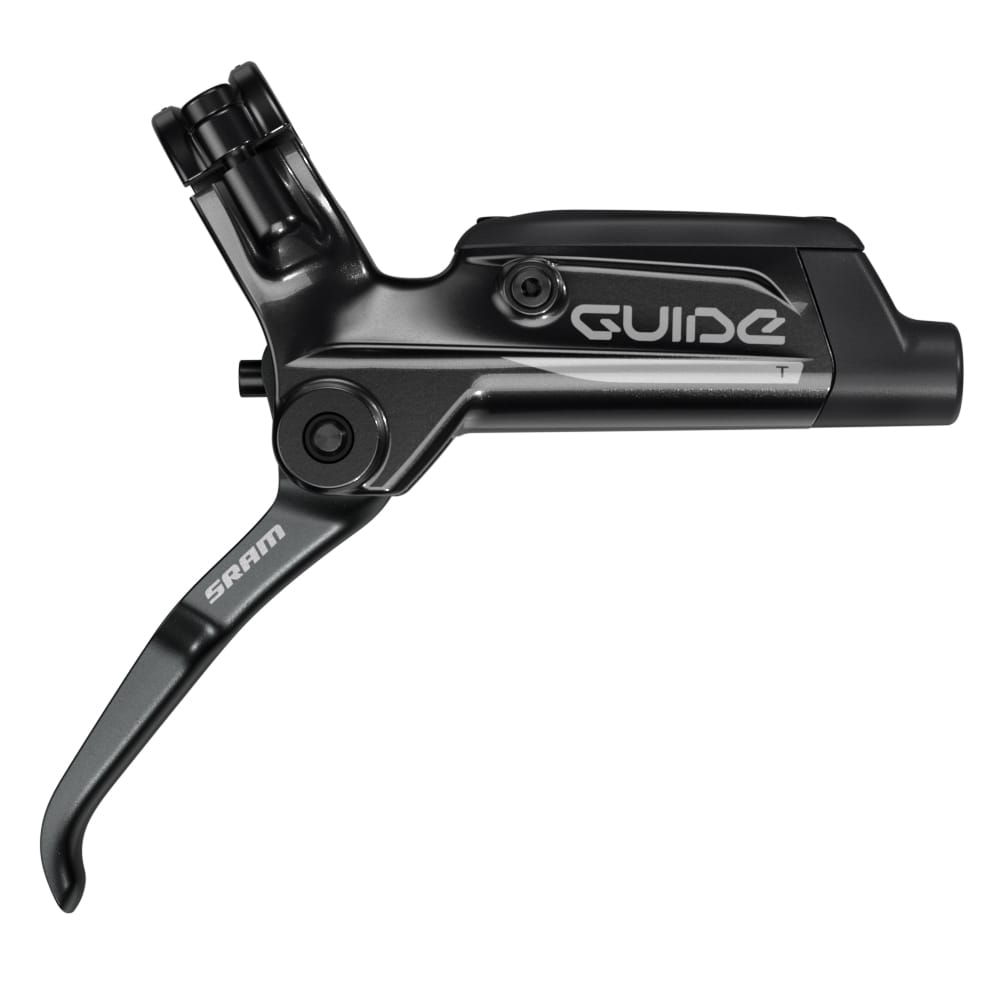
Why do so many cycle disc brake manufacturers still insist on using DOT rather than mineral or veg oil?
These days that’s one of the major buying factors for me, I just can’t be bothered with all the potential hazards that come with DOT,.
For a manufacture it quite simply it guarantees a base lever of performance of the fluid used in their brakes.
Each standard 3,4,5 5.1 etc has a strict set of specifications that must be reached. These relate to boiling points / viscosity etc and are all set as automotive standards by the US dept of transport.
Mineral oil is unregulated so there are significant variances in quality and performance between brands.
I do find it interesting that the argument for not using DOT fluids is aimed at the inherent dangers/hazards of working with it.
DOT fluid is only hazardous if you ingest a good amount of it or get it in your eyes. If either of those situations are going to happen, you probably shouldn’t be bleeding your own brakes.
You should always wear gloves, as skin irritation can occur – but that’s the same with working on anything with oils.
DOT fluid isn’t considered flammable either.
And, as with any fluids for your bike – keep them away from kids if they’re not told how to use and handle them properly.
DOT fluid IS flamable !
Go squirt some on your exhaust and see it go ‘woof’ like, well, a large loud woofer. Actually… don’t.
Many a car fire had been caused by the brake fluid reservoir detaching in a collision and dumping the contents (DOT brake fluid !) Onto a hot exhaust.
I was thinking more of the corrosive effect of it on various materials & paint finishes rather than possible but unlikely ingestion of it.
As a number of brake bleed systems use syringes to bleed the system these days it’s relatively easy to have a tube slip off and squirt fluid in all sort of unwelcome places.